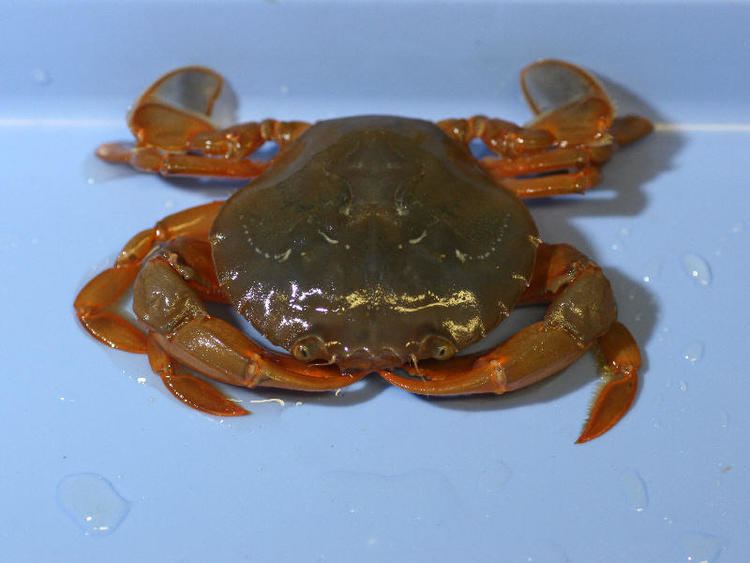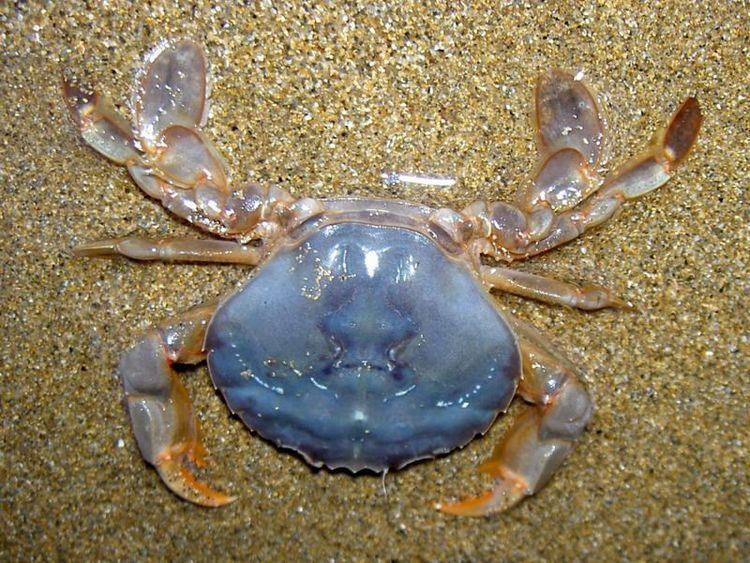Order Decapoda | Subphylum Crustacea Infraorder Brachyura Genus PolybiusLeach, 1820 Rank Species | |
Similar Decapoda, Liocarcinus depurator, Liocarcinus, Liocarcinus marus, Macropipus | ||
Polybius henslowii is a species of crab, the only species in the genus Polybius. It is a capable swimmer and feeds in open water in the north-east Atlantic Ocean and western Mediterranean Sea.
Contents

Description

The carapace of P. henslowii is almost circular, 48 millimetres (1.9 in) wide and 40 mm (1.6 in) long. The first pair of pereiopods (walking legs) carry claws, and the remaining four pairs are flattened with fringed edges. This contrasts with other members of the family Portunidae, which have only the last pair of legs adapted for swimming. P. henslowii is red-brown on the upper surface, and paler beneath.
Distribution
Polybius is found in the north-east Atlantic Ocean from the British Isles to Morocco, and in the western Mediterranean Sea. Rare specimens have been caught in the North Sea east of Shetland, and in the Skagerrak. Its range has expanded into the southern North Sea, possibly as a result of climate change. It can be found on sandy or gravelly sediments at depths of up to 500 metres (1,600 ft).
Ecology and behaviour
Polybius henslowii is a capable swimmer, and can be found swimming near the ocean surface, where it feeds on sardines, squid and other animals. P. henslowii has been observed to form pelagic swarms. These swarms are mostly composed of males, and are thought to be related to the reproductive cycle.
In Galicia (NW Spain), P. henslowii is an important food source for the yellow-legged gull, Larus michahellis. In summer, loggerhead turtles (Caretta caretta) off North Africa feed almost exclusively on P. henslowii.
Taxonomy
Polybius henslowii was first described by William Elford Leach in 1820, as the only species in his new genus Polybius. Although a number of other species were added to the genus over time, they have all since been split off into new genera such as Liocarcinus, Necora and Macropipus. The genus name "Polybius" may be in reference to the Greek historian Polybius; the specific epithet henslowii honours John Stevens Henslow, Professor of Botany at Cambridge University, who had collected the specimens used by Leach from a herring fisherman in North Devon in 1817. This was the first of several species that were named in Henslow's honour. Common names for the species include "sardine swimming crab" and "Henslow's swimming crab".
